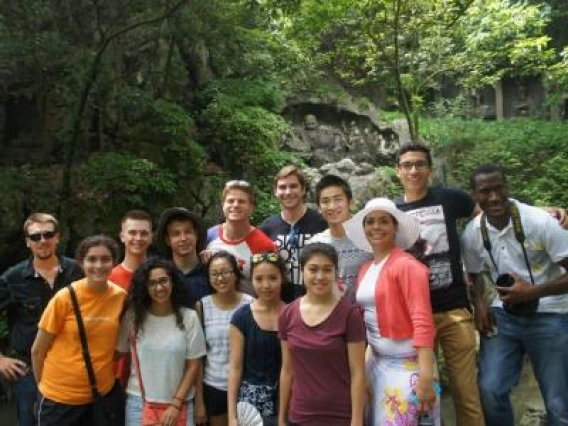
China is currently the fifth most popular study abroad destination among American college students, but UA has never had its own program in Mainland China before. In the summer of 2015, Department of East Asian Studies launched its Arizona-in-Shanghai program. We had 11 students as our first cohort, most of whom were going to China for the very first time. Arizona-in-Shanghai is a language-intensive program that recruits students with at least one semester of Chinese language. It is designed for students to take advantage of their time in China and have the opportunity for linguistic and cultural immersion. This time, the students’ background ranged from only one semester to three years of Chinese study. But, all of them shared a strong interest in learning more about the language and the society and a solid foundation of basic Chinese from the rigorous training in EAS’s language courses, which won them many thumb-ups from the local people in Shanghai.
As director of the program, Dr. Wenhao Diao designed the program curriculum to maximize students’ opportunities to interact with the local people. For example, students’ learning activities included giving oral presentations to Chinese college students about UA – and in Chinese. When our students translated UA’s battle song, Bear Down, and taught their Chinese peers to sing during the presentations, the University of Arizona and the city of Shanghai seemed to be weaved together just so naturally. The program also included a language practicum component that was designed to engage students in using language beyond the classroom and experiencing the local culture through language. For example, they went to visit a China’s National College Entrance Exam (known as gaokao in Chinese) site and Shanghai’s marriage market (where parents come and match make for their adult-age children on weekends). Language also became a lens through which the students could observe China’s cultural changes today. Some students were guided to analyze Shanghai’s linguistic landscape (e.g., street signs, billboards, etc.) in relation to the city’s globalization processes. During these events, students interacted with a wide range of people in Shanghai, ranging from the retired people practicing taichi in the park to young leaders of an underground LGQBT organization.
Certainly, language and culture learning didn’t stop at these curricular activities. When the students were visiting museums in the water town of Wuzhen, riding the boat on the West Lake, or doing kung fu with their Chinese master shi-fu, they also spoke Chinese. As a result, local people sometimes passed by and commented, “WOW! These foreigners’ Chinese is so good.”

